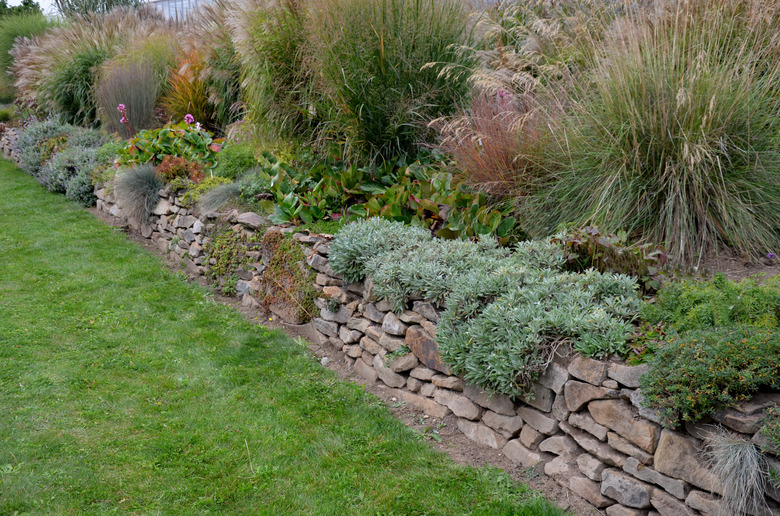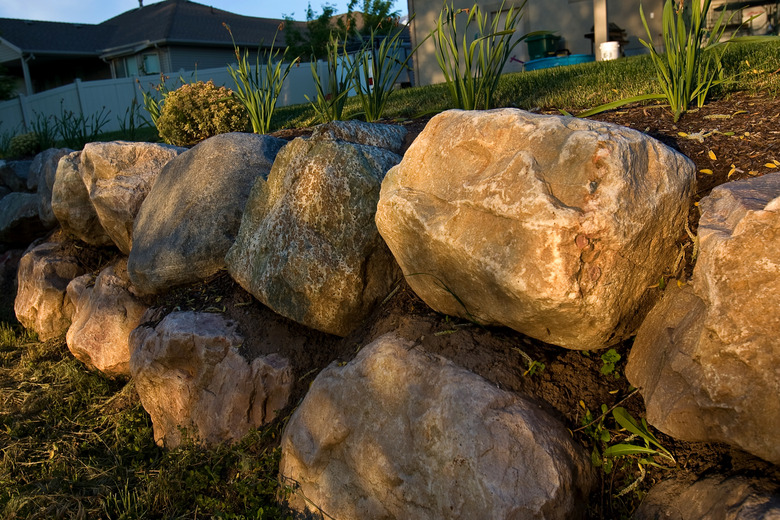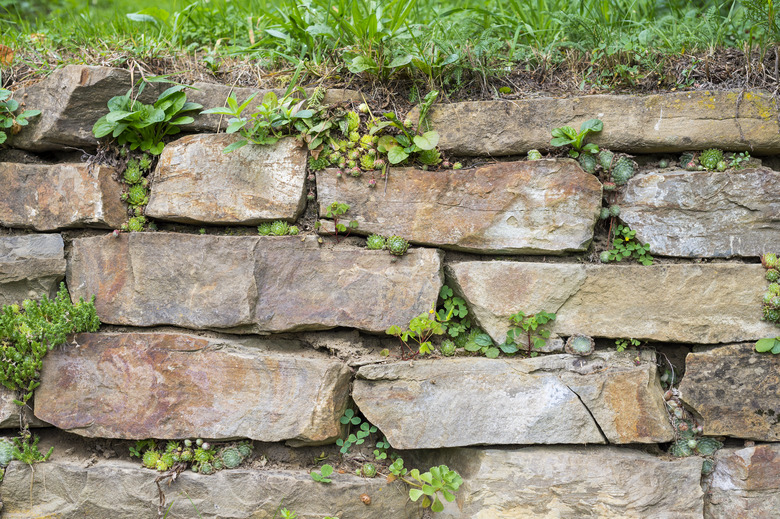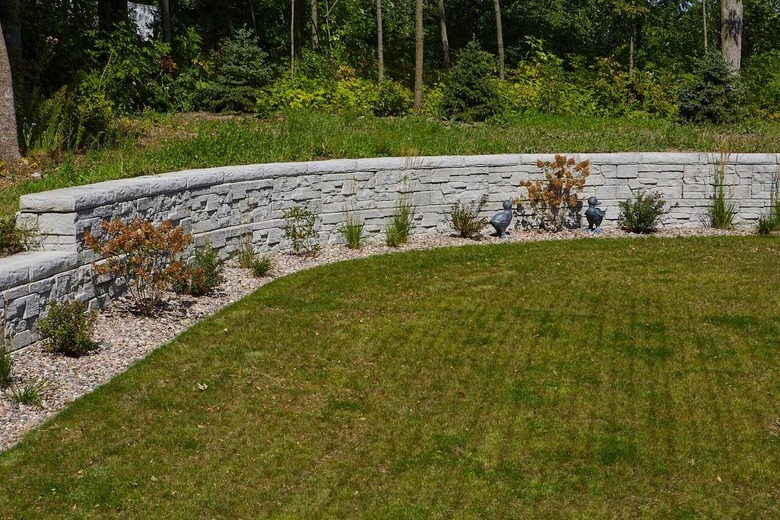3 Alternatives To Retaining Walls
We may receive a commission on purchases made from links.
A well-built retaining wall reduces soil erosion and enhances privacy, among other benefits. Standard retaining walls are made from concrete blocks, which can look a little bland. But you can get the same functionality of a retaining wall without sacrificing style with an alternative. There are several different attractive alternatives to retaining walls that can boost the overall aesthetics of your outdoor space while still working as they should.
1. Natural Rock
1. Natural Rock
Professionally placed piles of big, rounded, dusty boulders mixed with varying sizes of rocks can offer a dramatic backdrop to a bland backyard or elevate a home's curb appeal. The natural stone blends into the surroundings or create stunning contrast against a lush, green lawn. Landscaping boulders come in an array of hues, shapes and sizes.
Mix giant boulders with smaller rocks in dry stacks for a natural style or create a wall of rocks with mortar for a more formal look. When working with mortar, choose rocks that are square or rounded in differing sizes to get a level wall if capping the top of the wall. Round rocks and mortar can be amassed to form a meandering barrier with a rustic look.
Create a multilayered look with gabion walls, or wire cages. The varying sizes of sturdy cages are filled with river rocks or other fairly large rocks. This is ideal for retaining walls that may need to allow water runoff, such as from a sloped yard or a backyard that butts up against a large hill or mountain.
2. Sticks and Stones
2. Sticks and Stones
Mixing large, cut branches with rocks or geotextiles is a creative alternative to a concrete block retaining wall. If you go this route, cover the mixture with a breathable fabric to allow water to flow or seep through the wall if needed, which will prevent blockages or pressure behind the wall. Once the branches and other materials are established, vegetation will naturally grow into and around the wall. The added vegetation will further enforce and strengthen the natural alternative retaining wall.
Because this type of wall isn't as sturdy as other retaining wall alternatives, you should only install one on relatively flat areas where the wall won't experience a lot of pressure from behind.
3. Mechanically Stabilized Earth
3. Mechanically Stabilized Earth
Mechanically Stabilized Earth (MSE) walls, sometimes referred to as geowalls, are easy-to-install alternatives to standard concrete retaining walls. Perhaps the best part about them is that they do not require the use of heavy machinery to install. That makes them accessible to a variety of homeowners, even those that live in hard-to-reach spots where heavy machinery doesn't fit.
To put it simply, geowalls are reinforced blocks of backfill. The front-facing layer consists of rock or stone. Compacted soil is inside that. In most cases, a testing agency will monitor the construction and ensure the structure is solid and stable before approving it.



